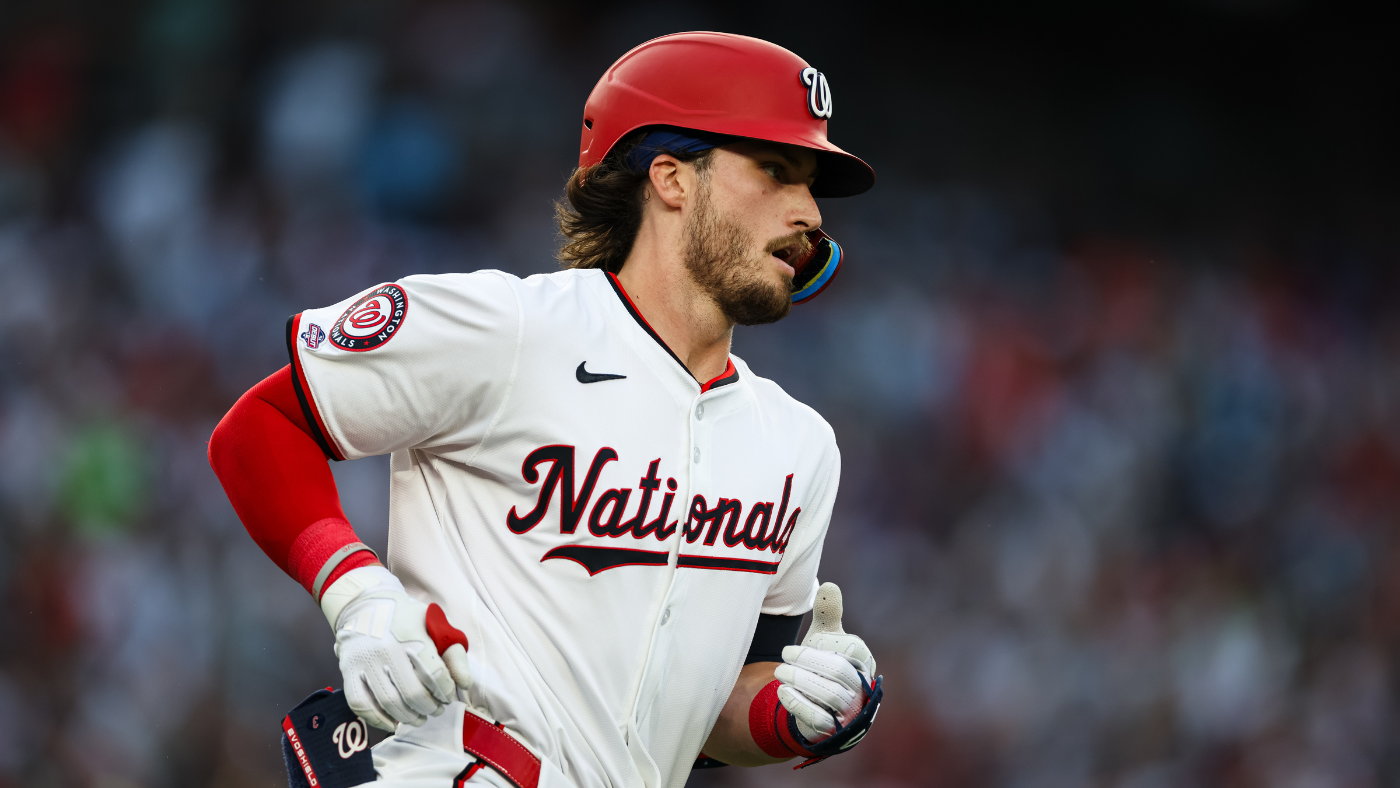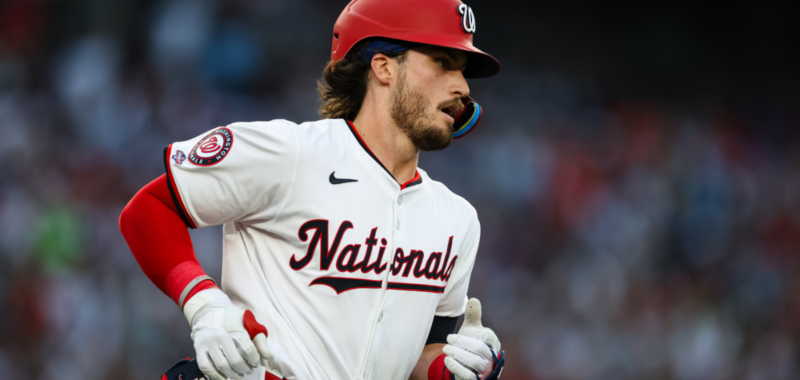
Earlier this week, Washington Nationals outfielder Dylan Crews made his big-league debut against the New York Yankees. Crew’s ascent to the majors required just over 13 months from the time he was selected with the No. 2 pick in the 2023 draft. His arrival means three of the top five selections from that class are now in The Show.
That oughtn’t come as much of a surprise to anyone who consumed our coverage heading into that draft. As we wrote weeks before the draft began: “scouts and analysts within the industry consider this to be a five-player class at the top.” Three of those players, Crews included, were collegiates who were expected to make quick rises.
Now that they’ve done just that, we here at CBS Sports felt this would be a grand opportunity to check in on how those top five picks are faring. Let’s get to it.
Skenes did something that No. 1 picks aren’t supposed to do: he got better, immediately. We spent a lot of time leading up to the 2023 draft writing about the nits evaluators had picked with his arsenal, specifically his fastball’s movement profile, and the risks associated with taking a pitcher No. 1 overall, ahead of some really good offensive prospects. Whatever you thought of that stuff, he rendered it moot by pulling a sinker out of his back pocket that has since overshadowed his fastball-slider pairing.
Skenes didn’t make his big-league debut until mid-May, but in the ensuing months he’s established himself as appointment viewing. He’s not the next big thing because he’s the current big thing. Skenes has started 17 times and is sporting a 2.16 ERA (192 ERA+) and a 5.20 strikeout-to-walk ratio. He’s attempting to become the first player in major-league history to start the All-Star Game and win the Rookie of the Year and the Cy Young Awards the year after being drafted. (Fernando Valenzuela accomplished those feats as a rookie, but he wasn’t drafted and he had previous MLB experience.)
Taking Skenes No. 1 was perfectly defensible at the time (albeit arguable depending on your philosophical stance). Now? It’s clear that the Pirates got it right. Kudos to them, and to Skenes for that matter.
2. Dylan Crews, OF, Nationals
Lest anyone forget, it was Crews — not his LSU teammate Skenes — who was considered by the industry to be the class’s top player. Crews has since seen his stock slip relative to his peers, specifically Skenes and Langford, because he was merely good in the minors while they were obliterating the competition. That doesn’t mean there’s legitimate reason to abandon hope of him turning into a high-quality player.
Crews’ metrics trended in the right direction following his promotion to Triple-A earlier this season, with him improving upon his strikeout and walk rates and upping his power production. He recorded several batted balls with exit velocities exceeding 110 mph, including a 112.6 mph single in late July that put him in company with the likes of Riley Greene and Freddie Freeman, among other top-notch MLB hitters.
It should be noted that a lot of Crews’ hardest contact has come on batted balls with single-digit launch angles, which bodes well for his chances of hitting for average. He’s not a dead-pull home-run hitter, either, with most of his fence-clearers this season exiting to left-center field. In fact, Crews had nearly as many opposite-field shots as he did outright pull jobs, a statistic that hints at his plus or better power upside.
On another team, Crews might be getting an extended look in center field. The Nationals have a talented ballhawk in place, in Jacob Young, meaning that Crews will get to play right instead. He ought to be an asset there. Provided he hits like he’s capable of, he should be able to gain back some of that draft cycle glow.
Clark received a lot of comparisons to Cubs outfielder Pete Crow-Armstrong heading into the draft. Both, evaluators reasoned, were plus up-the-middle athletes with ample secondary value. Clark, however, was deemed to be the superior offensive prospect thanks in part to more apparent strength. He’s since validated that assertion.
The high-school pick has split this season between the Midwest and Florida Leagues, batting .285/.382/.434 with nine home runs and 28 stolen bases (on 32 tries). Although he’s posted a higher OPS without the platoon advantage, his ball-tracking data indicates he has a better process versus right-handed pitching: fewer chases, fewer whiffs, and more authoritative contact.
Clark’s underlying power indicators aren’t as sparkling as the aforementioned home-run total indicates. All but one of his home runs were pulled, and he’s yet to hit a ball harder than 107 mph. Even so, the Tigers have to be thrilled with how his first full season has played out — especially with how he’s reasserted that there are some star-caliber potential outcomes in play for him down the road.
Langford was the first of the five to make it to the majors, breaking camp with the Rangers after scorching the ball to begin his professional career. He was so prolific that a reporter asked Rangers general manager Chris Young about the possibility of him replacing the injured Adolis García on the World Series roster. That didn’t happen, of course, but it says a lot that Langford’s name was even invoked in the first place.
With that background, you can understand if there’s a feeling of disappointment around Langford’s rookie season. As of this writing, he’s hitting .245/.314/.367 (96 OPS+) with seven home runs and 12 stolen bases. It doesn’t help that there hasn’t been a clean progression in his output. He’s had a hot streak here and there (his OPS flirted with .900 in June), but he’s actually performed worse, results-wise, since the break.
We do think there are several positives to take away from Langford’s first year. He’s shown a good command over the zone and for making hard contact, with the latter informing some “expected performance” metrics that suggest he deserves better topline numbers than the ones that will go on his baseball card. That plus a bag of chips doesn’t get you very far, but we’re willing to give him at least another season to develop into the plus hitter he appeared en route to becoming this time last year.
We’ll close out with Jenkins, who happens to be the member of the quintet we’ve seen the least of to date. Blame it on the hamstring he strained after his first plate appearance on Opening Day that sidelined him for nearly two months to begin the year. In turn, he won’t appear in his 100th professional game until sometime next week.
When Jenkins has been hearty and hale, he’s displayed the offensive competency that had scouts throwing cleanup order projections on him as an amateur. This season alone, he’s hit .286/.396/.437 with 25 extra-base hits and 10 more walks than strikeouts in 64 games. The ball-tracking data we have access to indicates he’s running an 85% contact rate and a 21% chase rate, and that he’s even hit a ball nearly 109 mph — not bad for someone whose 20th birthday is still more than five months off.
The Twins have had Jenkins split his time between center field and DH, but we think that he’s going to end up in a corner spot when all is said and done. Likewise, we fully expect that he’s going to add more over-the-fence power as he matures farther past his high school graduation. That leaves just one potential concern about him: his lackluster performance against lefties this season, albeit in a small sample. Otherwise? Jenkins is a very promising young hitter.

